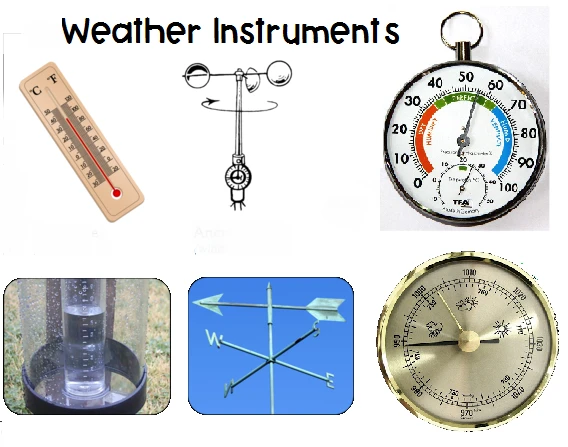
# Weather Instruments: Tools for Measuring Atmospheric Conditions
## Understanding the Importance of Weather Instruments
Weather instruments play a crucial role in meteorology by providing accurate measurements of atmospheric conditions. These tools help scientists, forecasters, and even everyday people understand and predict weather patterns. From simple thermometers to sophisticated radar systems, weather instruments come in various forms, each designed to measure specific atmospheric parameters.
## Common Types of Weather Instruments
### 1. Thermometers
Thermometers are perhaps the most familiar weather instruments. They measure air temperature, which is fundamental to understanding weather conditions. Modern digital thermometers provide quick and accurate readings, while traditional mercury thermometers are still used in some applications.
### 2. Barometers
Barometers measure atmospheric pressure, which is essential for weather forecasting. Changes in air pressure often indicate approaching weather systems. There are two main types: mercury barometers and aneroid barometers.
### 3. Hygrometers
These instruments measure humidity – the amount of water vapor in the air. Understanding humidity levels helps predict precipitation and assess comfort levels. Psychrometers, which use wet and dry bulb thermometers, are a common type of hygrometer.
### 4. Anemometers
Anemometers measure wind speed, while wind vanes determine wind direction. These measurements are crucial for aviation, marine navigation, and understanding storm systems. Cup anemometers and sonic anemometers are among the most widely used types.
### 5. Rain Gauges
Rain gauges measure precipitation amounts over a set period. Simple versions consist of a cylindrical container with measurement markings, while more sophisticated tipping bucket rain gauges provide automated measurements.
## Advanced Weather Measurement Tools
### Weather Satellites
Modern meteorology relies heavily on weather satellites that provide global coverage of atmospheric conditions. These satellites can track storms, measure sea surface temperatures, and monitor climate patterns.
### Radar Systems
Weather radar systems detect precipitation, its motion, and intensity. Doppler radar can also detect rotation in thunderstorms, helping to predict tornado formation.
### Weather Balloons
Equipped with instrument packages called radiosondes, weather balloons provide vertical profiles of temperature, humidity, and pressure in the atmosphere up to heights of about 30 kilometers.
## The Role of Weather Instruments in Daily Life
Weather instruments aren’t just for meteorologists. Farmers use them to plan planting and harvesting, pilots rely on them for flight safety, and outdoor enthusiasts use portable versions to plan activities. Even smart home systems now incorporate basic weather instruments to optimize heating and cooling.
## Maintaining and Calibrating Weather Instruments
For accurate measurements, weather instruments require regular maintenance and calibration. Exposure to the elements can affect their performance over time. Proper siting is also crucial – instruments should be placed away from obstructions that could influence readings.
## The Future of Weather Instrumentation
Technological advancements continue to improve weather instruments. Miniaturization allows for more portable devices, while wireless technology enables real-time data collection from remote locations. The integration of artificial intelligence helps process vast amounts of weather data more efficiently, leading to better forecasts.
From simple mercury thermometers to sophisticated satellite systems, weather instruments form the backbone of our understanding of atmospheric conditions. As technology advances, these tools will continue to evolve, providing ever more accurate and detailed information about our planet’s weather systems.
Keyword: instruments of the weather